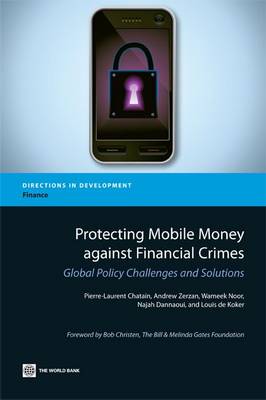Directions in Development - Trade
1 total work
Protecting Mobile Money against Financial Crimes
by Pierre-Laurent Chatain, Andrew Zerzan, Wameek Noor, Najah Dannaoui, and Louis de Koker
Published 24 February 2011
Mobile Money is a booming industry in an increasing number of countries worldwide. The project results from increased demand for guidance and technical assistance from governments after the 2008 publication of an exploratory paper, Integrity in Mobile Phone Financial Services, which discussed mobile money and the application of international anti-money laundering (AML) and combating the financing of terrorism (CFT) standards. For most, how to craft a regulatory regime that expands access to financial services to the poor through the development of mobile phone financial services, but compliant with AML/CFT standards remains elusive. Specific AML/CFT regulations related to mobile money have not been issued in many jurisdictions, mainly due to the lack of awareness of the risks these services can pose if the right controls are not in place.
Because the international standards for AML/CFT, the Financial Action Task Force's 40 + 9 Recommendations were designed and issued well before mobile money technology and business models became prevalent, even developed countries have begun to face challenges with their regulation.
The project team aims to provide practical guidance to jurisdictions and the Industry on how to draft regulations and internal guidelines that allow them to comply with AML/CFT standards with enough flexibility for mobile money to thrive. Specifically, the paper (1) takes stock of new AML/CFT regulations and practices relevant to Mobile money, (2) design guidelines for drafting AML/CFT regulations that cover mobile money and (3) propose examples of best practices for the Industry to include AML/CFT in their own business model.
Because the international standards for AML/CFT, the Financial Action Task Force's 40 + 9 Recommendations were designed and issued well before mobile money technology and business models became prevalent, even developed countries have begun to face challenges with their regulation.
The project team aims to provide practical guidance to jurisdictions and the Industry on how to draft regulations and internal guidelines that allow them to comply with AML/CFT standards with enough flexibility for mobile money to thrive. Specifically, the paper (1) takes stock of new AML/CFT regulations and practices relevant to Mobile money, (2) design guidelines for drafting AML/CFT regulations that cover mobile money and (3) propose examples of best practices for the Industry to include AML/CFT in their own business model.
